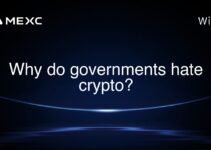Phishing emails are fraudulent messages designed to deceive recipients into divulging sensitive information, such as passwords, credit card numbers, and other personal details. These emails often mimic legitimate sources, such as financial institutions, well-known companies, or even personal contacts, to lure individuals into providing confidential data. This technique is a prevalent threat in the digital world, affecting individuals and organizations across various sectors, including finance and technology.
Significance for Investors, Traders, and Users
For investors and traders, the implications of falling victim to phishing attacks can be particularly severe. Financial markets are sensitive to information security; thus, unauthorized access to trading accounts or financial data can lead to significant financial losses or manipulation of market prices. Moreover, the credibility and operational security of financial platforms are crucial for maintaining user trust and market stability. Users, from casual internet surfers to corporate employees, are at risk of identity theft, financial fraud, and malware infections, which can lead to long-term personal and professional consequences.
Real-Life Examples of Phishing Emails
Example 1: The Fake Invoice Scam
In 2025, a well-known tactic involves sending an email that appears to come from a legitimate vendor stating that an invoice is due. The email contains a link that directs the user to a payment page that mimics the real vendor site but is actually controlled by the attacker. Once payment information is entered, it is stolen, and the user is often none the wiser.
Example 2: CEO Fraud
Another sophisticated phishing attack is the ‘CEO fraud’ where an employee receives an email from someone posing as their CEO or another high-level executive. The email urgently requests a wire transfer or sensitive information. Given the apparent high authority of the request, employees may act without verifying the email’s authenticity, leading to significant financial losses.
Example 3: Tax Refund Fraud
During tax season in 2025, phishing emails promising a tax refund became prevalent. These emails appeared to be from the tax authority and asked recipients to provide personal information to receive their refund. Such scams not only aim to steal financial information but also personal data for identity theft.
Updated 2025 Insights and Applications
By 2025, phishing techniques have evolved with technology, utilizing AI and machine learning to create more convincing fake emails and websites. Cybercriminals now employ sophisticated algorithms to analyze user behavior and craft personalized messages that are more likely to deceive the recipient. For instance, phishing emails during this period have begun to include more personal details, which are often harvested from social media or previous data breaches, to make fraudulent communications more convincing.
Platforms like MEXC, a leading cryptocurrency exchange, emphasize the importance of user education on security practices. MEXC has implemented advanced security measures and regularly conducts awareness campaigns to inform users about the latest phishing tactics and how to avoid them. Such proactive measures are crucial in safeguarding investor assets and maintaining trust in digital financial platforms.
Relevant Data/Statistics
According to a 2025 report by a leading cybersecurity firm, phishing attacks constitute over 32% of all cybersecurity incidents. Financially motivated phishing scams have seen a 40% increase as compared to the previous year, reflecting the growing sophistication and frequency of these attacks. The report also highlights that approximately 60% of phishing emails were identified as targeting financial account information, emphasizing the high risk for investors and financial institutions.
Conclusion and Key Takeaways
Phishing remains a significant threat in the digital age, particularly for those in the financial sector. Investors, traders, and everyday users must stay vigilant and informed about the latest phishing tactics. It is crucial to verify the authenticity of any request for sensitive information and to use secure platforms that prioritize user security. Platforms like MEXC play a pivotal role in this landscape by not only providing secure trading environments but also educating their users on potential cybersecurity threats. Remember, awareness and proactive security measures are key to protecting oneself against the evolving tactics of cybercriminals.
By understanding the nature of phishing and recognizing its signs, individuals and organizations can significantly reduce the likelihood of falling victim to this type of cybercrime. Always approach unsolicited requests for personal or financial information with skepticism and prioritize cybersecurity in your daily digital interactions.
DISCLAIMER
Article(s) displayed above is/are generated by artificial intelligence (AI) and may not be manually reviewed by a member of the MEXC team before it is published. The content displayed above does not represent the views of MEXC or its affiliates. Similarly, MEXC does not endorse the accuracy or truthfulness of the above data. Under no circumstance should reliance be placed on the above information. You are recommended to consult a professional, independent advisor where necessary.



